People deal with stress in a variety of ways; some healthier than others. Some people throw themselves into their work. Others turn to vices. And then there’s a growing sect of people who put on puffy-sleeved shirts and floral print dresses, start their own sustainable vegetable gardens, and ask themselves “What would Laura Ingalls Wilder do?” That oddly specific last example sums up a somewhat recent aesthetic called cottagecore. And while it’s mostly about fashion, you can find cottagecore records, the perfect cottagecore house, even a cottagecore lifestyle. But can the promises of cottagecore actually be delivered? Or is it simply the futile dream of a generation hopelessly shackled to runaway technology?
The Most Fashionable Milkmaid on Instagram
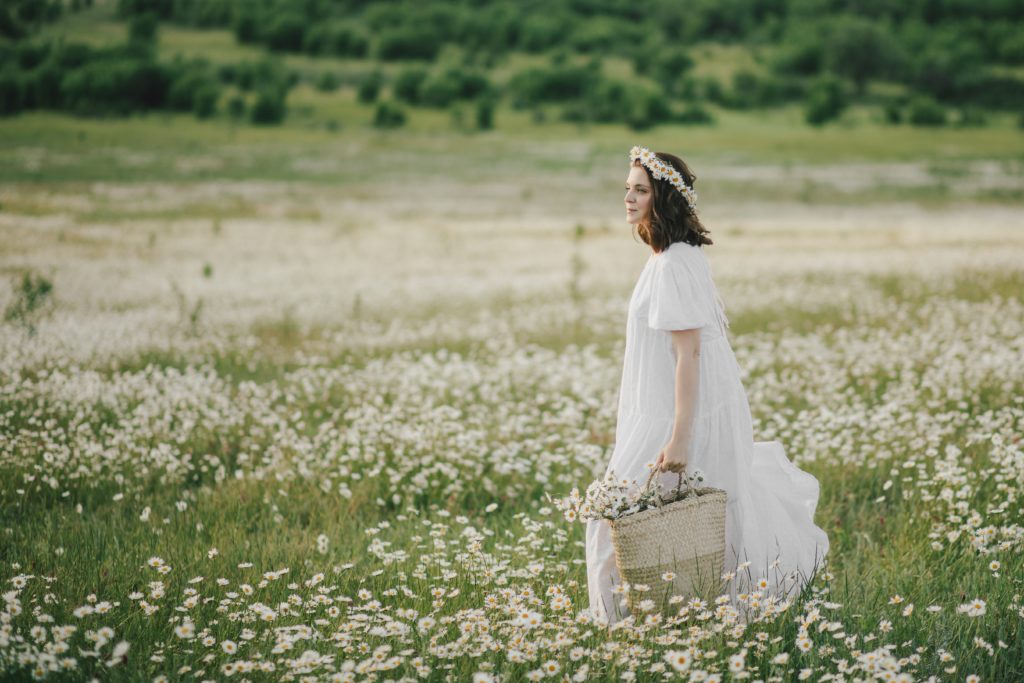
The style we’ve come to recognize as cottagecore began steadily building inertia sometime shortly after 2010. Yet, it wasn’t officially dubbed “cottagecore” until Tumblr users popularized the term in 2018. It’s often ascribed as a Millennial or Gen Z phenomenon, though obviously the desire to escape into a welcoming verdant countryside knows no age.
So, how do you know cottagecore when you see it? As with any subcultural movement tied heavily to aesthetics, the definition can shift depending on who you ask. But there’s often an emphasis on traditional rural living, so cottagecore clothing often reflects a fancified caricature of antiquated country life. Think milkmaid couture, all puffy sleeves, ruffles and laces. You’ll also find plenty of muted floral print patterns and lengthy layered dresses.
The Little Cottagecore House on the Prairie
But it’s normally not enough to garb yourself in prairie chic. Instagram, TikTok and other social media accounts often reward an immersive cottagecore experience. So cottagecore interior design is a thing. And as someone whose mother was into cottagecore decades before it had a name, I’d recognize it anywhere.
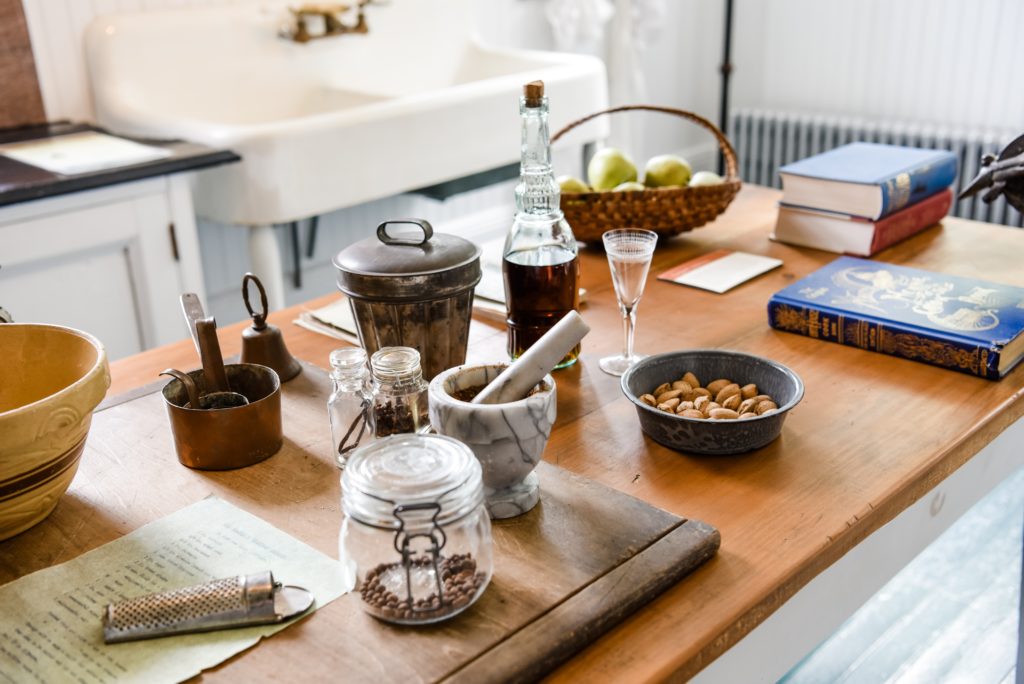
To make myself a grilled cheese sandwich as a child, I needed to walk past the antique butter churn against a backdrop of floral print wallpaper. My bare feet trod the contours of hand-crafted stained hardwood cobblestone floors. Warm wood panel cupboards towered all around me. A nearby antique hutch displayed Pfaltzgraff plates emblazoned with stylized blue flowers.
Sure, I enjoyed the same contemporary conveniences as my friends growing up in the 1980s. I just enjoyed them in a cottagecore house that looked like it was decorated by The Waltons.
Fast forward over three decades to when cottagecore interior design was the dominating trend for the 2020 holiday season. Stores reported a distinct uptick in needlepoint kits. So what’s the correlation? Cottagecore interior design often incorporates liberal use of cross-stitched decor; framed textile artwork adorning floral-patterned walls. My mother was a cross-stitching legend. Who’d have known she was decades ahead of the trend?
The Look or the Lifestyle
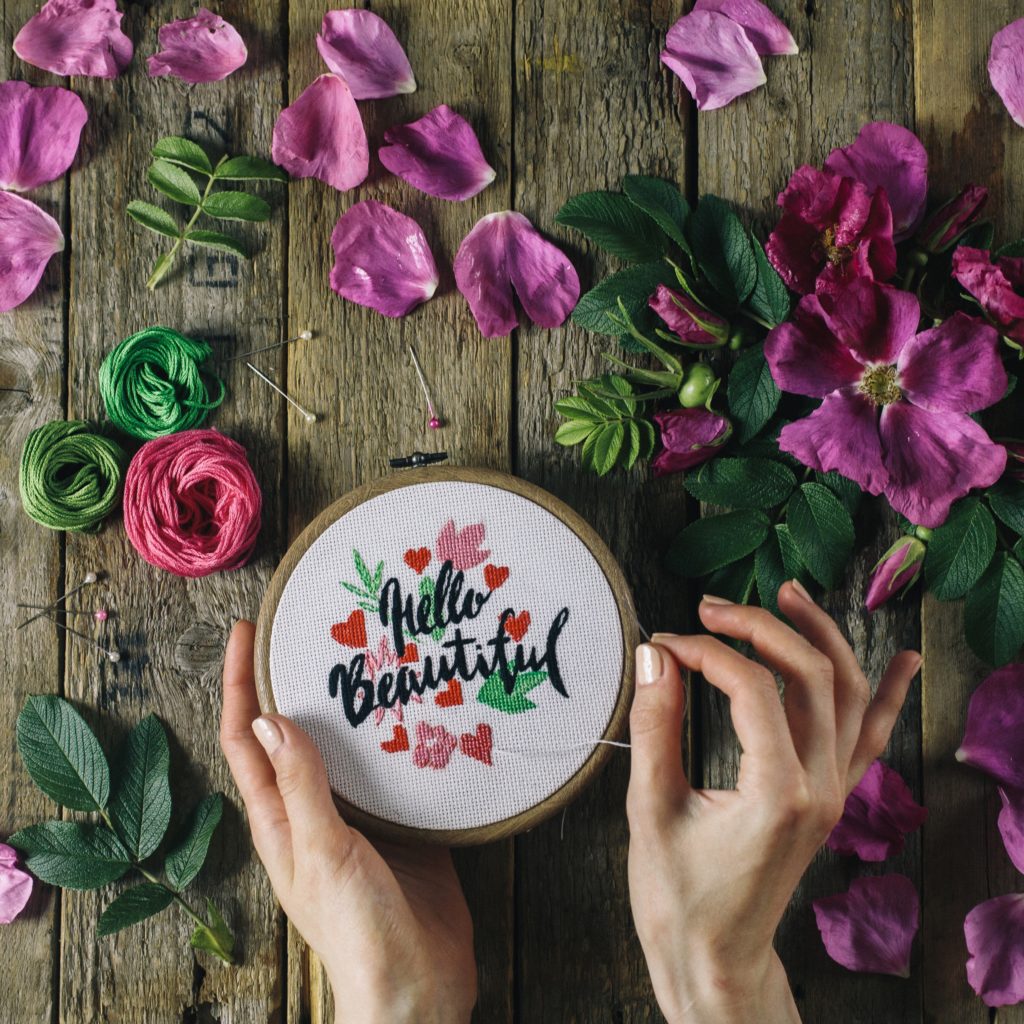
And for the dabblers, cottagecore ends with the aesthetic. But for devotees, fashion is just a jumping off point for the lifestyle. The cottagecore lifestyle evinces the greater themes of cottagecore principles: living in simplicity, honoring the environment, and adopting a reverence for self-sufficiency.
Those living a cottagecore lifestyle are inclined to bake their own bread or grow vegetables in their own sustainable gardens. In 2021, cottage gardening was even a major trend in the UK according to the Royal Horticultural Society of the United Kingdom.
Cottagecore devout also highly value hobbies that incorporate arts and crafts. This can include drawing, sculpting pottery, sewing, crocheting, and reading. It’s evident that the common thread connecting these leisurely activities is a placid, calming, almost meditative quality. And this lust for comfort likely illuminates why cottagecore is so popular among younger generations.
The World Outside a Perfect Cottagecore House

The economy hasn’t been particularly kind to millennials and Gen Z. Boomers have only briefly relinquished their dominance in the real estate market. And during that period, a global pandemic handed control back to them.
In 2022, boomers purchased over 10% more homes than millennials. And while boomers may be quick to paint a portrait of hardship when recounting their golden years, it’s undeniable that a high-pressure hustle culture has gripped the American workforce for the entirety of millennials’ and Gen Z’s lives.
And just as the younger generations were beginning to get a semblance of a grip on a slippery economy, one of the most significant events of our lifetimes dropped on them like the sky itself was falling. The global pandemic rattled psyches in ways no one could have ever predicted. Isolation and quarantine were safe bets, but sometimes came at the cost of mental wellness.
Simultaneously, this uncertain period introduced a game-changing concept: working from home. In essence, economic instability and a fatal disease created a monster that made younger generations want to run and hide. Working from home gave them a means to feasibly do it.
The New Model of an Old Message
Cottagecore’s message of placid tranquility had quite the ambassador in July 2020 when pop superstar Taylor Swift released her acclaimed album Folklore. Featuring compositions written during the pandemic-driven quarantine, the record’s often seen as highly representative of the cottagecore aesthetic. This was further reinforced by Swift’s visual aesthetics in music videos and live performances while promoting the album.
Yet, some argue that cottagecore isn’t exactly a new concept, but rather a re-packaged idea on yet another of its many cycles. Cottagecore draws parallels to the 19th century’s Arts and Crafts movement, which we touched on in our home spotlight on the Sam Maloof house. The Arts and Crafts movement was critical of industrial production methods, refocusing attention on fine craftsmanship. While cottagecore may not hold such an obvious contempt for mass production, its very nature reassigns value to hand craftsmanship.
Even earlier, Henry David Thoreau famously sang the praises of simple living in his 1854 transcendentalist bible Walden. At once a philosophical manifesto, documentation of a social experiment, and guidebook for self-sufficiency, Walden captures a time when Thoreau escaped to a wooded area near Walden Pond to build a log cabin in which he spent two years, two months, and two days.
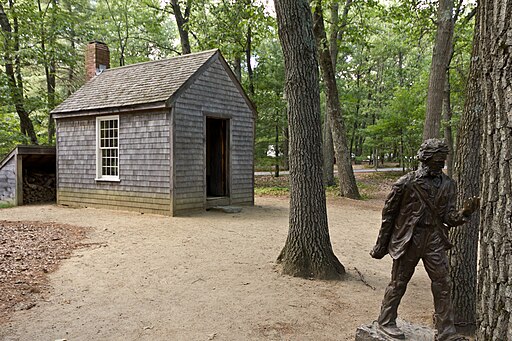
Of course, he also enjoyed certain luxuries that most cottagecore enthusiasts can’t claim. Chief among them: the land upon which he built his cabin was owned by his friend, noted poet Ralph Waldo Emerson. No matter the merits of Walden, a simpler life is rarely just a few swings of the ax away for the rest of us.
Can a Cottagecore House Exist in the Big City?
For the overwhelming majority of cottagecore enthusiasts, the dream of a simple life is just that. A dream. Even with more careers adhering permanently to work-from-home models, it’s challenging for younger generations to just slip away to a country cottage. Therefore, many are forced to reconcile a cottagecore ethos and aesthetic with metropolitan life.
Compared to other major cities in the U.S., Los Angeles is actually one of the friendlier options for the cottagecore lifestyle. The sprawling cityscape provides several options for quaint cottagecore houses in style, if not setting. But when you get further out into the peripheral neighborhoods, you can find the perfect metro-adjacent cottagecore house at the edge of the desert or the Angeles National Forest.

Then, there are LA’s unique storybook architecture properties, exemplified by the likes of the Spadena house or the Snow White cottages. Yet, as we said before, the economy has been especially vicious for younger generations. Therefore, that cute-as-a-button desert casa or forestside cottagecore house may not be exactly in a reasonable price range.
The Ever-Elusive Cottagecore Fantasy
This brings to light another frequent criticism of cottagecore. Its adherents don’t seem to have a full understanding of the hardships that go hand-in-hand with country life. In romanticizing the bucolic, enthusiasts often imagine a perfect cottagecore house straight out of the English countryside. There’s an appreciation for warm wood edifices and roaring hearths, but rarely for the ax swings that feed them. Nature isn’t often as yielding as she’s presented in these fantasies. There’s little time for getting lost in a book or cross stitching on the farm.
But is there really harm in the younger generations escaping into fantasy? Sure, they may never own that perfect cottagecore house. They’ll spend their years in offices instead of languidly painting landscapes or tending to their vegetable gardens. But where are we without our dreams?

Is it so wrong to look at the walls of digital information, the static roar of mass shootings and political discord, or the slick glassy surface of the next economic hurdle and yearn to be swallowed by the dirt and leaves of somewhere far away from society? We might not want to wear puffy sleeves and floral print while it happens. But if we pretend we’ve never longed for that tranquil repose, then the social noise is probably too loud for us to even hear ourselves.
The Digital Foundation of the Cottagecore Dream
And that’s where one of the loudest critiques of cottagecore creeps in. There’s a sad hypocrisy to it; a self-loathing ouroboros ever-eating its own tail. It’s the fact that this aesthetic that turns away from the digital world in favor of a simpler life only exists with such popularity because of the digital world.
Cottagecore is often described as an “internet aesthetic”. Its popularity was founded and maintained through rampant social media use. Cottagecore influencers dominate Tumblr, Instagram, and TikTok. Its fashion consistently sells on sites like Etsy and Depop. And the loudest proponents of the great cottagecore escape can’t help but have a camera nearby to document every perfectly pastoral detail.
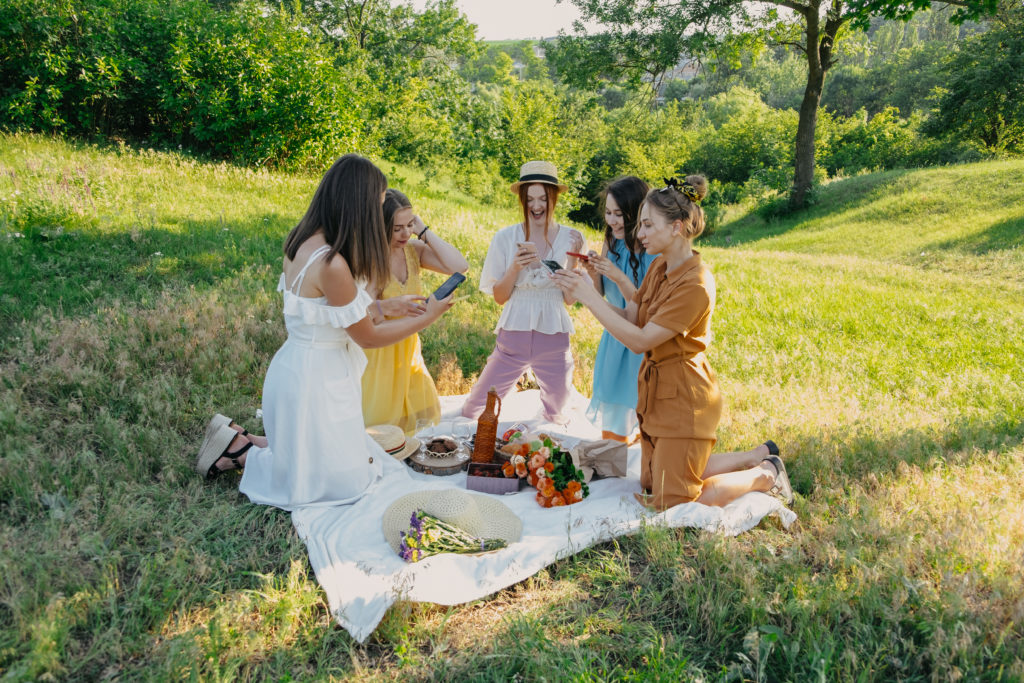
Perhaps there are true believers of the cottagecore aesthetic, preaching “Get thee behind me, WiFi.” But the majority of cottagecore zealots would go into crisis the moment they realize their phones get no bars in that house in the country.
Balancing Cottagecore Dreams with Folk Horror Nightmares
And perhaps in its way, the modern resurgence of folk horror in cinema is accounting for that hypocrisy. Or maybe, in its hyperbolic way, owning up to cottagecore’s shortcomings. Just as cottagecore paints an impractically peaceful, carefree distortion of country life, folk horror radically emphasizes that the country can kill us with just as much brutality as the city.
It’s a subgenre that’s been around since at least the 1960s. The unholy trinity of folk horror classics has often been regarded as Witchfinder General (1968), The Blood on Satan’s Claw (1971), and The Wicker Man (1973). But around the time that cottagecore began to pick up steam, so did a renaissance in folk horror. The subgenre has stirred up conversation over recent years with The Witch (2015), The Ritual (2017), Midsommar (2019), and Men (2022). In these movies, the horrors of isolation are explored in such a way as to say “There is no real retreat.”
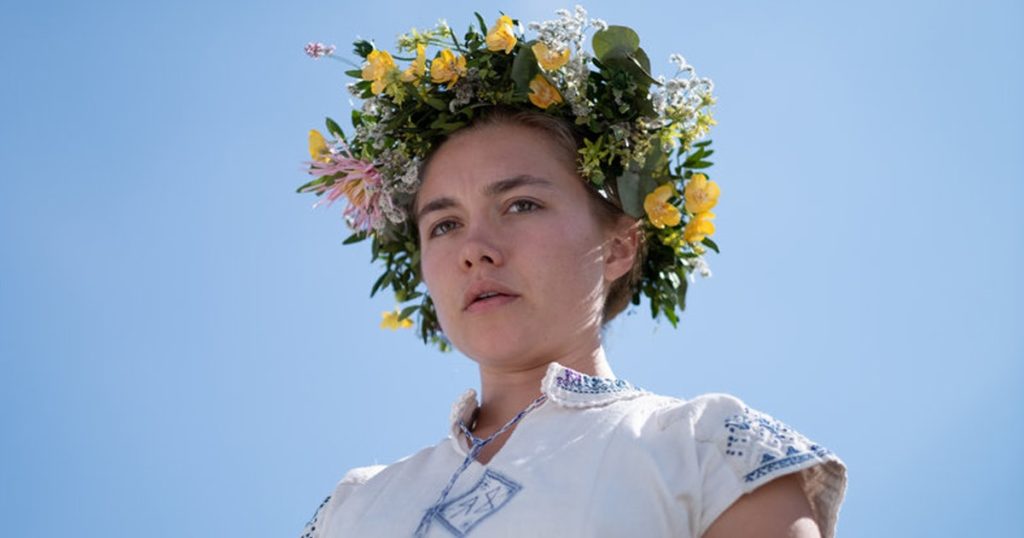
The Relevance of Cottagecore to the Bigger Picture
But is there any real harm in the cottagecore dream? With the cards that have already been stacked against millennials and Gen Z throughout their lives, a farmhouse fantasy seems like a minor allowance. Maybe they’ll never find that idealized cottagecore house with the bountiful garden and textile studio. Maybe they will.
In the meantime, can we really say they’re doing any damage with their misconceptions of a life they’ll likely never live? Or better yet: If a cottagecore enthusiast dreams in the city hundreds of miles away from the country, does it make a difference?

Comments
Post a Comment